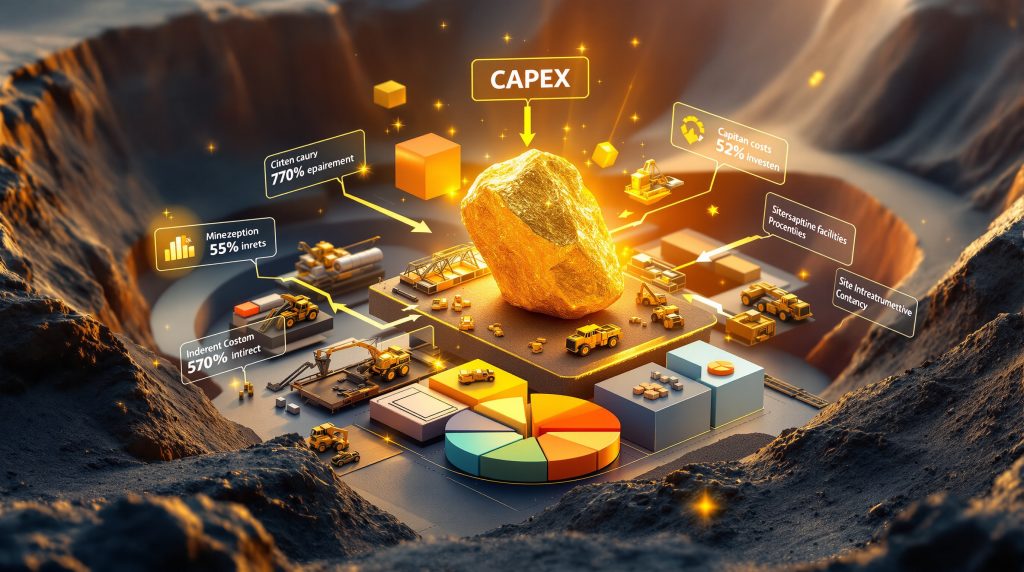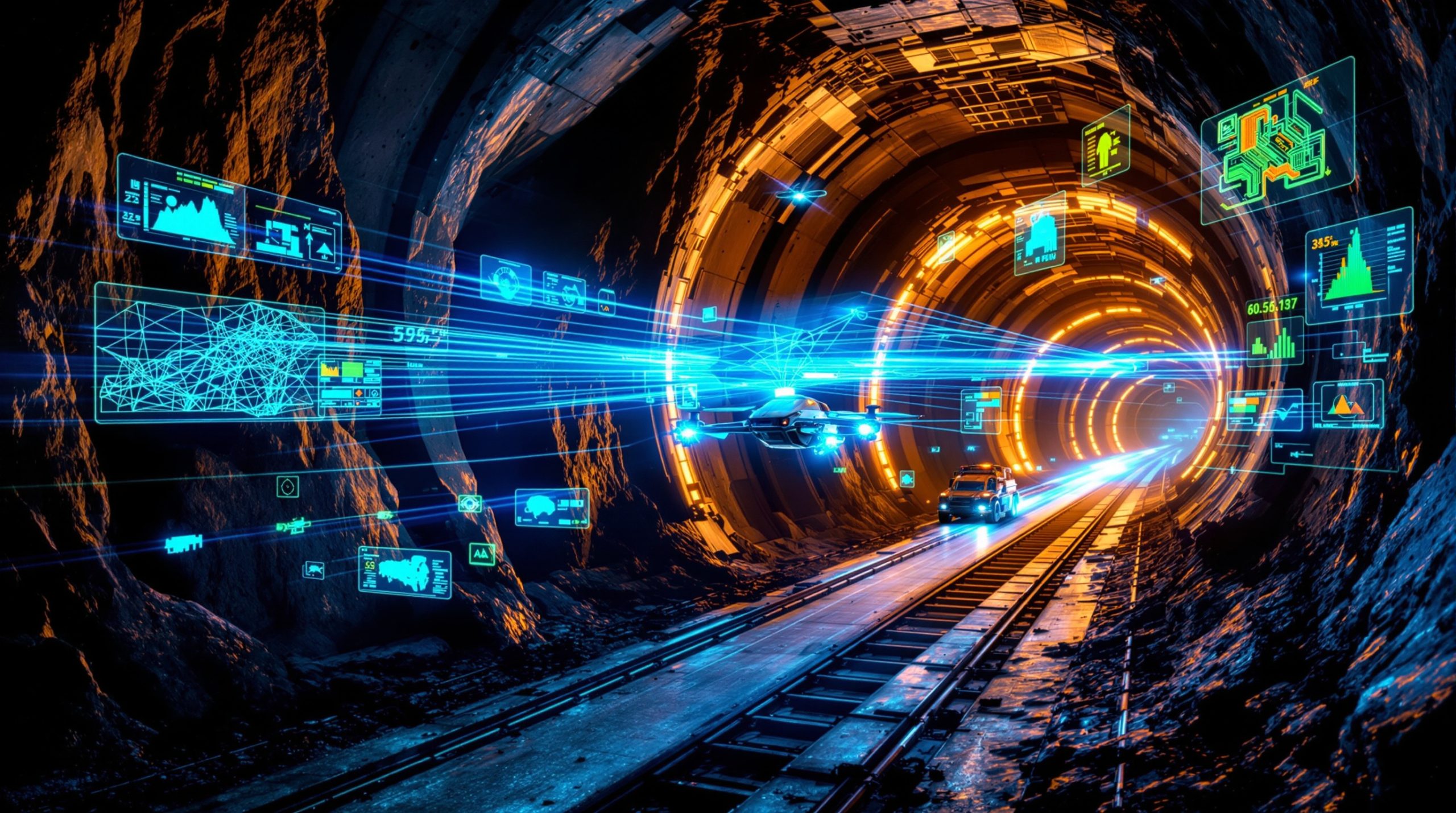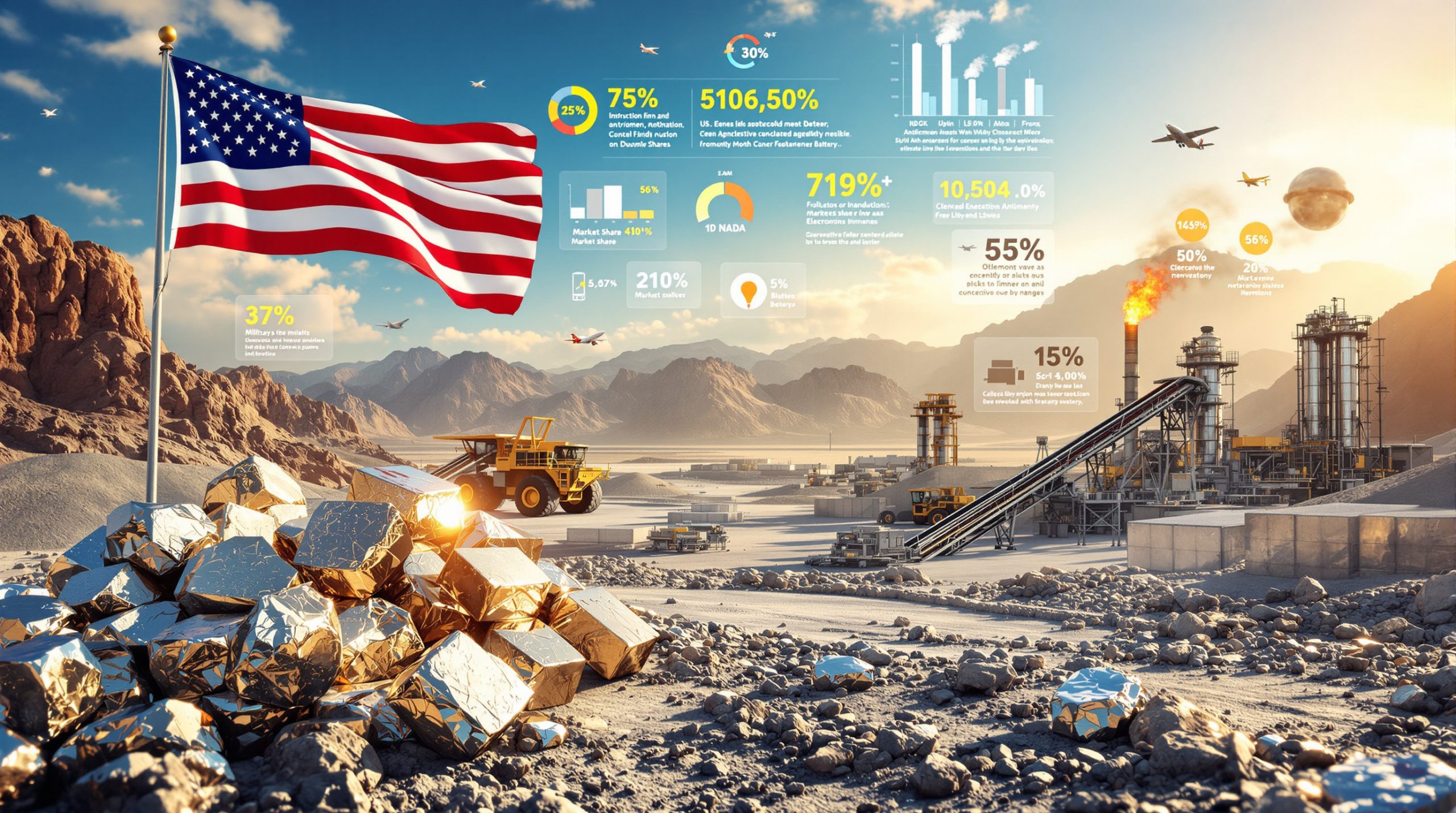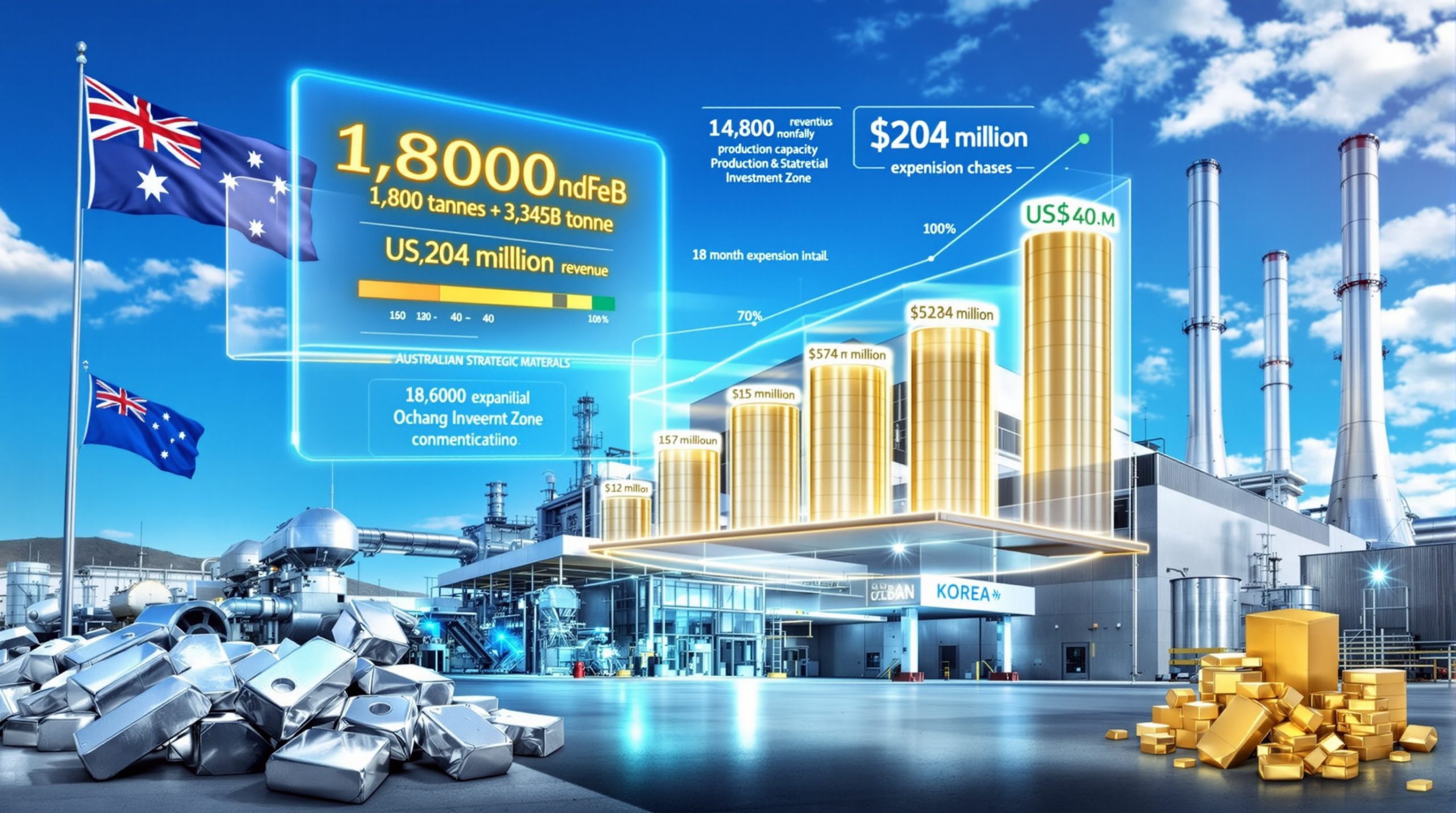Understanding Capital Expenditure in Mining Projects: A Comprehensive Breakdown
Mining projects require substantial capital investments before they generate any revenue. Understanding the complex breakdown of these expenses is crucial for investors, project planners, and mining professionals alike. This article explores the critical components of capital expenditure (CAPEX) in mining projects and provides industry insights into cost allocation, optimization strategies, and future trends.
What Are the Main Components of Capital Expenditure in Mining Projects?
Capital expenditure in mining represents the significant upfront investment required to develop and construct a mining operation before production begins. These investments typically range from hundreds of millions to several billion dollars, varying widely based on project scale, location, complexity, and mining method.
The distribution of CAPEX across different categories follows industry patterns, though each project has unique characteristics:
- Mine development: 15-25% of total CAPEX
- Processing facilities: 30-40% of total CAPEX
- Site infrastructure: 20-30% of total CAPEX
- Indirect and owner's costs: 15-25% of total CAPEX
- Contingency: 10-20% of total CAPEX
Understanding this distribution helps in benchmarking projects and identifying potential areas for cost optimization. As mining projects become more complex and face stricter regulatory requirements, the allocation of capital across these categories continues to evolve.
Key Factors Influencing Overall CAPEX
Several factors significantly impact the total capital requirements for a mining project:
- Deposit characteristics (size, depth, geometry)
- Mining method (open-pit vs. underground)
- Processing complexity based on ore mineralogy
- Project location and accessibility
- Available infrastructure
- Regulatory environment
- Market conditions during procurement and construction
The interplay between these factors creates unique CAPEX profiles for each mining project, making standardized comparisons challenging but essential for informed decision-making.
How Do Mine Development Costs Impact Overall CAPEX?
Mine development costs represent the foundation of any mining project and vary significantly between underground and open-pit operations. These expenses typically account for 15-25% of total project CAPEX but can increase substantially in technically challenging deposits.
Open-Pit Mine Development Components
Open-pit development includes several critical elements:
- Pre-stripping and overburden removal (often the largest development cost)
- Pit design and initial bench establishment
- Haul road construction within the pit
- Dewatering systems installation
- Slope stability measures and monitoring systems
For large open-pit operations, pre-stripping alone can represent hundreds of millions of dollars in initial capital. The stripping ratio (waste to ore) significantly impacts this cost component, with higher ratios driving up development expenses.
Underground Mine Development Components
Underground mines require different development infrastructure:
- Shaft sinking ($30,000-$50,000 per vertical meter for large production shafts)
- Decline and ramp construction ($5,000-$10,000 per meter)
- Ventilation raises and primary air systems
- Primary development drifts and access ways
- Ground support systems and initial stope preparation
Underground development costs typically exceed those of open-pit operations on a per-ton basis but offer advantages for deeper, higher-grade deposits. The choice between shaft and decline access depends on depth, production rate, and economics.
Technical Considerations Affecting Development Costs
Several technical factors can substantially impact development costs:
- Geotechnical conditions and rock quality (affecting support requirements)
- Depth of mineralization and required infrastructure
- Presence of water and dewatering requirements
- Environmental considerations and permitting complexities
- Topography and surface conditions
Industry experts note that unexpected geotechnical challenges during development often lead to significant cost overruns, highlighting the importance of comprehensive site investigation and conservative planning approaches.
What Mining Equipment Represents Major Capital Investment?
The mining equipment fleet typically constitutes 15-25% of total project CAPEX and varies based on mining method, production targets, and site conditions. Equipment selection and sizing decisions have long-lasting implications for operational efficiency and future capital requirements.
Primary Mining Fleet Components
Major equipment categories and their approximate costs include:
| Equipment Type | Approximate Cost Range (USD) | Typical Quantity | Replacement Cycle |
|---|---|---|---|
| Haul trucks (220-400t) | $3-6 million | 10-30 units | 60,000-100,000 hours |
| Hydraulic excavators | $5-10 million | 2-5 units | 50,000-80,000 hours |
| Production drills | $1.5-3 million | 3-8 units | 40,000-60,000 hours |
| Wheel loaders | $2-4 million | 2-6 units | 45,000-70,000 hours |
| Dozers and graders | $0.8-1.5 million | 4-10 units | 40,000-60,000 hours |
Fleet sizing depends on production requirements, haul distances, material characteristics, and equipment availability targets. Oversizing can inflate initial CAPEX while undersizing may limit production capacity and flexibility.
Underground Mining Equipment
Underground operations require specialized equipment with different cost profiles:
- Load-haul-dump (LHD) machines: $0.8-1.5 million each
- Underground production drills: $1-2 million each
- Underground trucks: $1-1.8 million each
- Bolting and scaling equipment: $0.5-1 million each
- Personnel carriers and utility vehicles: $0.2-0.4 million each
The confined spaces of underground mines often necessitate a larger number of smaller units, creating different fleet management challenges compared to open-pit operations.
Technology Integration Costs
Modern mining equipment increasingly incorporates advanced technologies:
- Fleet management systems
- Autonomous operation capabilities
- Predictive maintenance technology
- Drilling and blasting optimization systems
These technological enhancements typically add 5-15% to base equipment costs but can deliver significant operational benefits through improved productivity, reduced maintenance costs, and enhanced safety. Recent automation improvements have revolutionized how mining companies approach equipment selection and operation.
Why Are Processing Plants Often the Largest CAPEX Component?
Mineral processing facilities typically represent the single largest capital expenditure category in mining projects, often accounting for 30-40% of total CAPEX. These complex facilities transform raw ore into marketable products through multiple stages of size reduction, separation, and concentration.
Processing Plant Components by Mineral Type
Processing requirements vary substantially by commodity:
Base metals (copper, zinc, lead)
- Crushing and grinding circuits (often the most capital-intensive component)
- Flotation cells and concentrate handling
- Dewatering and filtering systems
- Tailings thickening equipment
Precious metals (gold, silver)
- Crushing, grinding, and classification
- Leaching tanks and carbon circuits
- Elution and electrowinning circuits
- Smelting and refining equipment
Bulk commodities (iron ore, coal)
- Primary, secondary, and tertiary crushing
- Screening and classification systems
- Washing plants and dewatering
- Product handling and stockpiling systems
The complexity and capital intensity of processing plants directly correlate with ore complexity and desired product specifications.
Processing Plant Cost Factors
Several factors significantly influence processing plant CAPEX:
- Throughput capacity (tons per hour/day)
- Complexity of the ore mineralogy
- Required recovery rates and product specifications
- Environmental compliance requirements
- Automation and control systems
- Location factors and construction complexity
Industry data indicates that processing plants in remote locations can cost 30-50% more than equivalent facilities in accessible regions due to logistics, labor, and construction challenges.
How Do Tailings and Waste Management Facilities Impact CAPEX?
Tailings storage facilities (TSFs) and waste management systems are increasingly significant components of mining CAPEX due to stricter environmental regulations and safety standards. Following high-profile tailings dam failures, regulatory requirements have tightened considerably, driving up initial capital costs but reducing long-term risks.
Tailings Storage Facility Components
Modern TSFs include multiple safety and environmental protection elements:
- Initial dam construction (starter dam)
- Liner systems and seepage control
- Water management infrastructure
- Monitoring instrumentation
- Closure planning elements
The evolution toward filtered (dry stack) tailings technologies has increased initial CAPEX but offers improved environmental performance and water conservation benefits.
Waste Rock Management
Proper waste rock management is crucial for environmental compliance:
- Waste dump design and construction
- Acid rock drainage prevention measures
- Surface water management systems
- Progressive rehabilitation infrastructure
The capital costs associated with waste management have increased as regulations focus more on long-term stability and environmental protection.
Environmental Considerations Affecting Costs
Several factors drive tailings and waste management CAPEX:
- Regulatory requirements for containment
- Seismic design criteria
- Climate factors (rainfall, evaporation)
- Proximity to sensitive receptors
- Long-term stability requirements
Industry analysts note that tailings and waste management costs have increased by 40-60% over the past decade, driven primarily by enhanced safety requirements and more stringent closure standards.
What Infrastructure and Utilities Are Required for Mining Operations?
Site infrastructure represents a substantial portion of mining CAPEX, particularly for remote or greenfield projects. These supporting systems enable mining and processing operations and can account for 20-30% of total capital costs.
Power Supply Infrastructure
Reliable power is essential for mining operations:
- Power generation facilities (diesel, gas, renewable)
- Transmission lines and substations
- Distribution networks
- Backup systems and redundancy
For remote projects without grid access, power generation can represent 10-15% of total CAPEX. The industry trend toward renewable energy integration is changing the capital profile of mining power systems, with higher upfront costs but lower operational expenses.
Water Management Systems
Water infrastructure is critical for both operations and environmental compliance:
- Water supply pipelines and pumping stations
- Water treatment plants
- Storage reservoirs and tanks
- Distribution networks and fire protection
Water management CAPEX has increased significantly as mining companies implement more sophisticated recycling and conservation systems in response to water scarcity and regulatory pressures.
Transportation Infrastructure
Access infrastructure enables the movement of materials and products:
- Access roads and haul roads
- Rail spurs or dedicated rail lines
- Port facilities for export projects
- Airstrips for remote locations
For projects in undeveloped regions, transportation infrastructure can represent 15-20% of total CAPEX, with roads and rail connections often being the largest components.
Site Buildings and Facilities
Supporting facilities enable operational efficiency:
- Administration offices and control rooms
- Maintenance workshops and warehouses
- Laboratory and quality control facilities
- Employee accommodations and amenities
For remote sites requiring camp facilities, accommodation and amenities can represent 5-10% of total CAPEX, particularly when designed for extended operational life.
How Do Indirect Costs Contribute to Mining Project CAPEX?
Indirect costs typically account for 15-25% of total mining CAPEX and include expenses not directly related to physical construction but essential for project execution. These costs often receive less attention than direct components but can significantly impact overall project economics.
Engineering and Project Management
Professional services form a substantial portion of indirect costs:
- Detailed engineering design
- Project management and controls
- Procurement and contract administration
- Construction management and supervision
Engineering and project management typically represent 7-12% of total CAPEX, with percentages varying based on project complexity and execution strategy.
Pre-Production Activities
Pre-production activities bridge construction and operations:
- Mobilization and site establishment
- Temporary construction facilities
- Pre-commissioning and commissioning
- Performance testing and handover
These activities typically consume 3-6% of total CAPEX but are crucial for successful project startup and operational readiness.
Owner's Costs
Owner's costs include project development and organizational readiness expenses:
- Land acquisition and compensation
- Permitting and regulatory compliance
- Project team salaries and expenses
- Insurance and financial costs
These costs often account for 5-10% of total CAPEX and can be significantly higher in jurisdictions with complex regulatory requirements or community engagement needs.
Why Is Contingency Planning Critical in Mining CAPEX Budgets?
Contingency allowances are essential components of mining CAPEX budgets, typically ranging from 10-20% of the total project cost depending on the level of engineering definition and risk profile. These allowances provide financial buffer against uncertainties and risks inherent in complex mining projects.
Contingency Allocation by Project Stage
Contingency requirements decrease as project definition increases:
| Project Stage | Typical Contingency Range | Accuracy Level |
|---|---|---|
| Conceptual study | 30-50% | ±50% |
| Pre-feasibility study | 20-30% | ±25-30% |
| Feasibility study | 10-20% | ±15-20% |
| Detailed engineering | 5-10% | ±10-15% |
Industry data shows that mining projects with inadequate contingency allowances are significantly more likely to experience cost overruns that threaten economic viability.
Risk Factors Influencing Contingency Requirements
Several risk categories drive contingency requirements:
- Commodity price volatility
- Foreign exchange fluctuations
- Supply chain disruptions
- Labor availability and productivity
- Regulatory changes and permitting delays
- Weather and seasonal constraints
- Technical and geological uncertainties
Quantitative risk analysis techniques increasingly inform contingency calculations, moving the industry away from simple percentage-based approaches toward more sophisticated risk-based contingency allocation. According to McKinsey's research on mining project delivery, effective contingency planning remains one of the most critical success factors in mining capital projects.
How Do ESG Considerations Impact Modern Mining CAPEX?
Environmental, Social, and Governance (ESG) considerations are increasingly significant components of mining CAPEX budgets, reflecting changing stakeholder expectations and regulatory requirements. These investments, while adding to initial capital costs, often reduce operational risks and enhance project social license.
Environmental Investment Areas
Environmental compliance and sustainability initiatives include:
- Renewable energy infrastructure
- Water recycling and conservation systems
- Emissions reduction technology
- Biodiversity offsets and conservation programs
Industry leaders report allocating 10-15% of total CAPEX to environmental initiatives beyond minimum compliance requirements, viewing these investments as essential for long-term operational sustainability.
Social Investment Components
Community and social investments include:
- Community infrastructure development
- Training and local employment programs
- Cultural heritage protection measures
- Public health and safety initiatives
Social investment requirements vary widely by jurisdiction but typically represent 3-7% of total CAPEX in regions with significant local communities or indigenous populations.
Governance and Compliance Systems
Governance infrastructure supports transparency and compliance:
- Environmental monitoring networks
- Data management and reporting systems
- Transparency and disclosure mechanisms
- Stakeholder engagement platforms
These systems, while representing a relatively small portion of CAPEX (1-3%), are increasingly critical for maintaining regulatory compliance and stakeholder trust. The decarbonisation benefits from these investments are becoming increasingly recognized as having long-term value beyond compliance.
What Are the Key Differences in CAPEX Between Underground and Open-Pit Mines?
The distribution of capital expenditure varies significantly between underground and open-pit mining operations, reflecting their different technical requirements and development approaches. Understanding these differences is crucial for comparing project economics and making investment decisions.
Open-Pit CAPEX Distribution
Open-pit operations typically have:
- Lower development costs per ton of ore
- Higher equipment fleet investment
- Lower ventilation and ground support costs
- Higher pre-stripping and waste removal costs
Open-pit mines generally have lower initial CAPEX intensity per ton of production capacity but higher CAPEX requirements for waste management and equipment.
Underground CAPEX Distribution
Underground operations typically feature:
- Higher development costs per ton of ore
- Lower equipment fleet investment
- Substantial ventilation and ground support costs
- Significant shaft/decline infrastructure requirements
Underground mines generally have higher initial CAPEX intensity per ton of production capacity but often access higher-grade ore with lower stripping requirements.
Comparative Analysis
The table below highlights typical CAPEX distribution differences:
| CAPEX Component | Open-Pit Proportion | Underground Proportion |
|---|---|---|
| Mine development | 15-20% | 25-35% |
| Mining equipment | 20-30% | 15-20% |
| Processing plant | 30-40% | 25-35% |
| Infrastructure | 15-25% | 20-30% |
| Indirect costs | 10-15% | 15-20% |
Industry analysts note that underground mining CAPEX intensity ($/annual ton of capacity) typically exceeds open-pit requirements by 40-80%, though this gap narrows for deep open pits or shallow underground operations.
How Can Mining Companies Optimize CAPEX Efficiency?
Optimizing capital expenditure efficiency is crucial for maximizing project returns and ensuring financial viability, particularly in a volatile commodity price environment. Several approaches have proven effective in enhancing CAPEX efficiency without compromising operational performance.
Strategic Approaches to CAPEX Optimization
Strategic planning approaches include:
- Phased development strategies
- Modular construction techniques
- Contract mining considerations
- Equipment leasing versus purchasing analysis
- Infrastructure sharing with nearby operations
Industry data indicates that phased development approaches can reduce initial CAPEX requirements by 20-40% while allowing projects to adapt to market conditions and operational learnings.
Technology-Driven CAPEX Reduction
Technological solutions offer CAPEX optimization opportunities:
- Digital twin modeling for design optimization
- Advanced simulation for equipment sizing
- 3D modeling and virtual reality for construction planning
- Prefabrication and modular construction techniques
- Automation and remote operations capabilities
These technologies typically add 1-3% to engineering costs but can reduce overall CAPEX by 5-15% through improved design efficiency and reduced construction complexity.
Financial Strategies for CAPEX Management
Financial approaches can optimize capital deployment:
- Strategic partnerships and joint ventures
- Build-own-operate-transfer (BOOT) arrangements
- Streaming and royalty financing
- Equipment financing and leasing options
- Strategic timing of procurement decisions
Alternative financing mechanisms like streaming deals and consolidation and joint ventures have become increasingly common, allowing mining companies to reduce upfront CAPEX requirements while sharing project risks.
What Are the Future Trends in Mining Project CAPEX?
The mining industry is experiencing several emerging trends that are reshaping capital expenditure patterns and priorities. Understanding these trends is essential for forward-looking project planning and investment decisions.
Technological Transformation
Technology is changing CAPEX profiles:
- Increased automation and remote operations
- Electrification of mining fleets
- Renewable energy integration
- Digital twins and advanced simulation
- Artificial intelligence for optimization
Industry forecasts suggest that technology investments will increase from 5-8% of mining CAPEX today to 15-20% by 2030, driven by productivity improvements and ESG considerations.
Sustainability-Driven Investments
Sustainability considerations are redirecting capital:
- Carbon reduction technologies
- Water-efficient processing methods
- Dry stacking tailings facilities
- Progressive rehabilitation infrastructure
- Circular economy approaches
Leading mining companies are allocating 15-25% of CAPEX to sustainability initiatives, viewing these investments as essential for long-term operational viability and social license. Modern mine planning increasingly incorporates these considerations from the earliest project stages.
Changing Cost Structures
Cost structures are evolving in response to market and societal pressures:
- Higher upfront environmental compliance costs
- Increased community development investments
- Greater technology integration expenses
- Enhanced closure planning and provisioning
- More robust risk management systems
These changes typically increase initial CAPEX but reduce operational risks and long-term liabilities, reflecting the mining industry evolution trends toward more sustainable and responsible development models.
FAQs About Mining Project Capital Expenditure
What percentage of total mining project costs is typically CAPEX versus OPEX?
For most mining projects, capital expenditure represents approximately 30-40% of the total life-of-mine costs, with operational expenditure accounting for the remaining 60-70%. This ratio varies significantly based on mining method, commodity type, and project life, with underground operations typically having higher OPEX proportions than open-pit mines.
How does project location impact mining CAPEX?
Remote locations can increase CAPEX by 20-50% compared to projects near established infrastructure due to additional requirements for power generation, water supply, transportation infrastructure, and accommodation facilities. Climate extremes (arctic or tropical) further escalate costs due to specialized construction requirements and shorter construction seasons.
What is the typical payback period for mining project CAPEX?
Payback periods for mining projects typically range from 3-7 years, depending on commodity prices, production costs, and capital intensity. Projects with higher-grade resources or lower technical complexity generally achieve faster payback periods, making them more resilient to market volatility and financing constraints.
How do financing costs factor into mining CAPEX?
Financing costs, including interest during construction, commitment fees, and arrangement costs, can add 5-15% to the total project CAPEX. These costs are influenced by project risk profile, company credit rating, and prevailing market conditions. For junior mining companies, financing costs often represent a more significant proportion of total CAPEX compared to major producers with stronger balance sheets.
What is sustaining CAPEX in mining and how does it differ from initial CAPEX?
Sustaining CAPEX refers to ongoing capital investments required to maintain production levels, replace equipment, and meet evolving regulatory requirements. It typically ranges from 3-8% of initial CAPEX annually and is essential for maintaining operational efficiency and extending mine life. Unlike initial CAPEX, sustaining capital is usually funded from operational cash flow rather than external financing.
Looking to Invest in the Next Major Mineral Discovery?
Discover why significant ASX mineral discoveries can generate substantial returns by exploring Discovery Alert's dedicated discoveries page, where our proprietary Discovery IQ model converts complex mineral data into actionable insights for both short-term traders and long-term investors.




